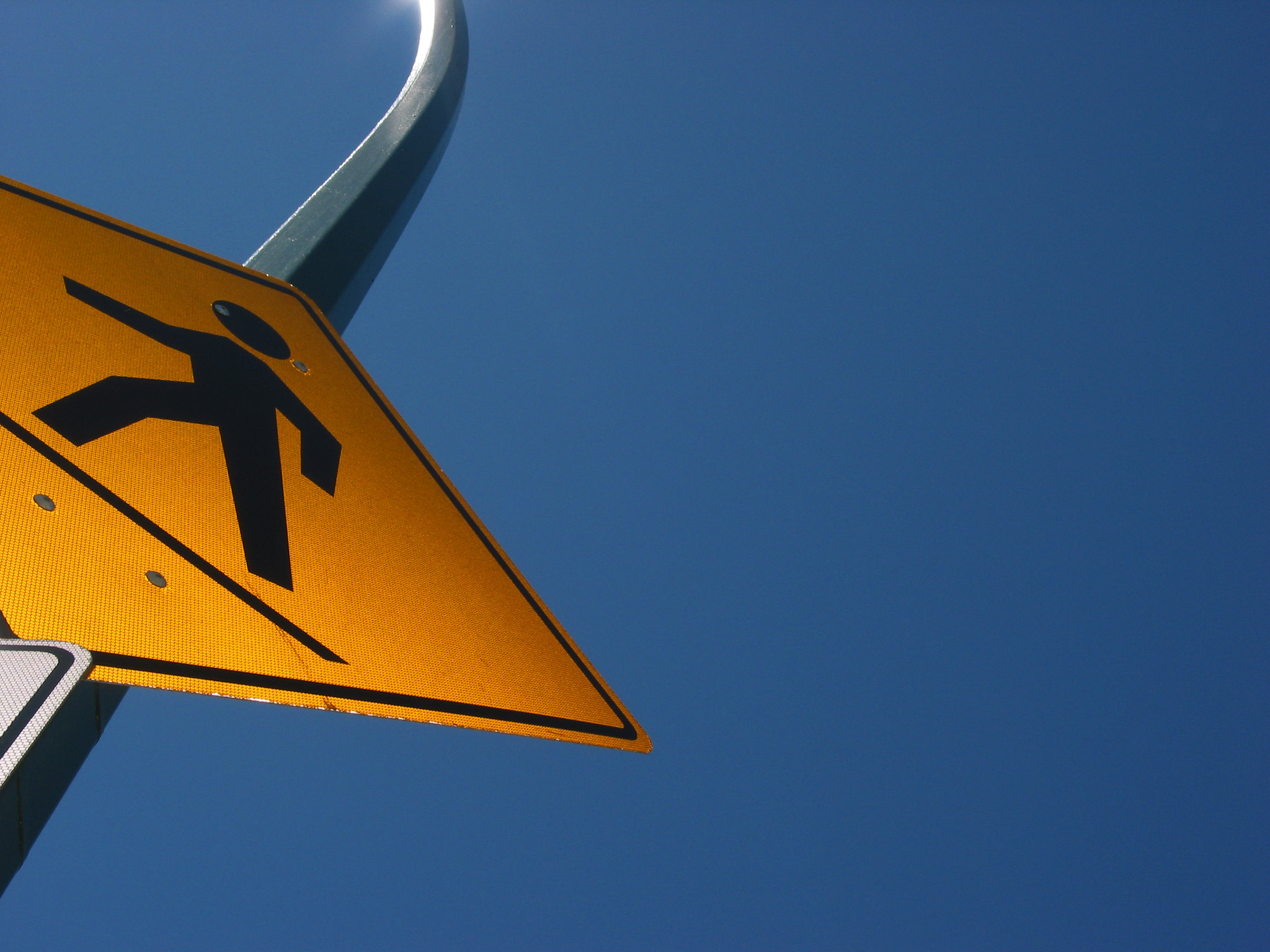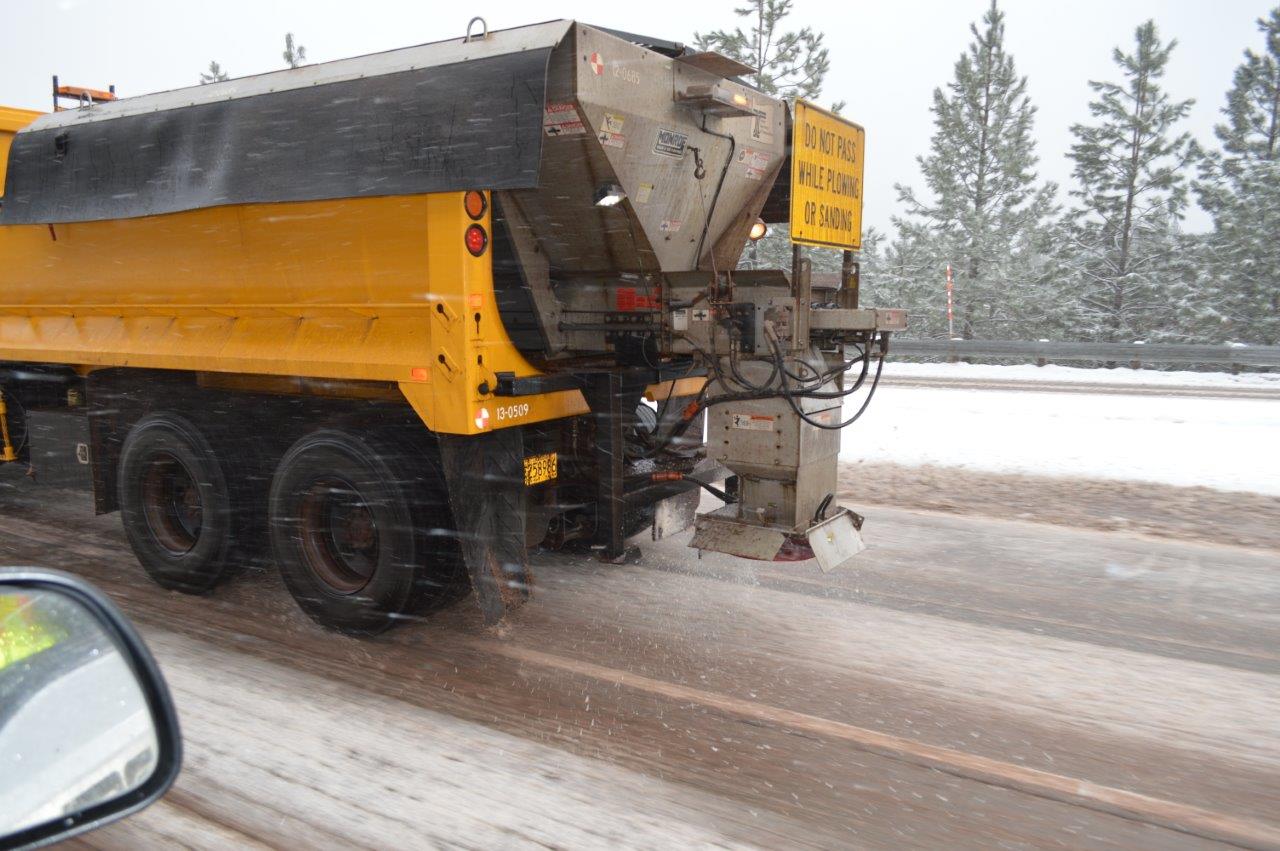Americans aren't just ignoring 90’s house legend CeCe Peniston’s advice to “Keep On Walkin'" as they pandemic wanes — they're also jumping in their cars and driving vehicle trips back up near pre-pandemic levels, a new report finds.
According to a new report from the mobility data analytics firm Streetlight, U.S. walking trips dropped by a stunning 36 percent between 2019 and 2022, despite a global respiratory pandemic that some hoped would encourage more pedestrian activity. Worse, all 50 states experienced a walking decline, and every major metro lost walking activity, the report — and some cities like Akron, Ohio saw declines of as much as 49 percent.
Recently, Streetlight researchers warned that cycling numbers had dipped slightly between 2021 and 2022. Those recent decreases, though, were nowhere near as steep as those experienced by walkers, whose total trips have plummeted far below pre-pandemic levels.
Driving, however, is now just 4 percent below 2019 levels, the report said.
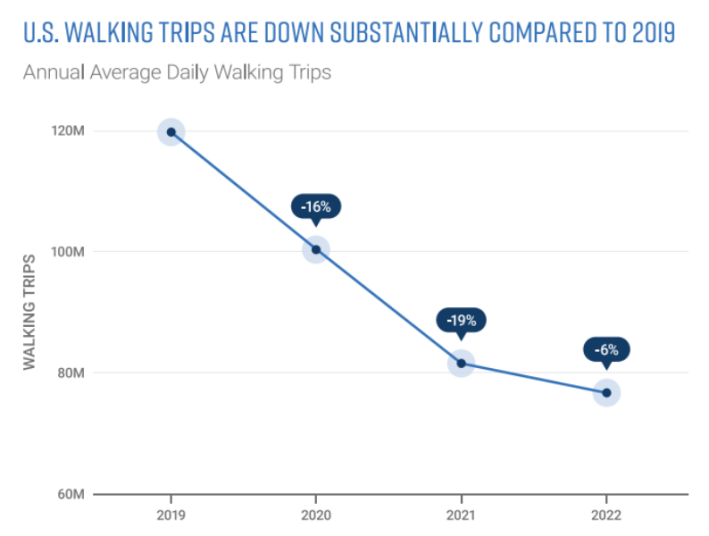
That's grim data for a country with serious milestones to reach in order to curb the impacts of climate change. According to the Environmental Protection Agency, transportation accounts for 28 percent of greenhouse gas emissions — the largest of any sector — and America will struggle to meet its 2050 climate goals without increasing the share of short trips completed by walking rather than driving.
It's also bad news for the nation's health goals, since both DOT and the CDC agree that active transportation can help stave off health challenges like diabetes, heart disease, and other chronic health issues.
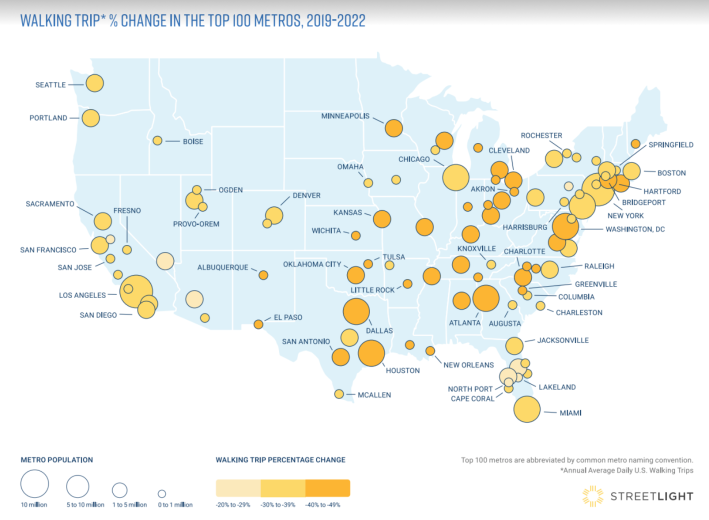
So why are Americans walking less — and what can cities do to get them moving again? For Emily Adler, one of three authors on the report, the answer is complicated.
“This data to me, [is] potentially speaking to what the remote work trend has sort of wrought in terms of the way people move around,” said Adler. “If your only trip is to your kids' school now, and that's not a walkable trip, that changes your walking trajectory for the day, which obviously has implications for climate, for public health, etc."
Car ownership is also on the rise, which could mean former regular walkers are getting behind the wheel.
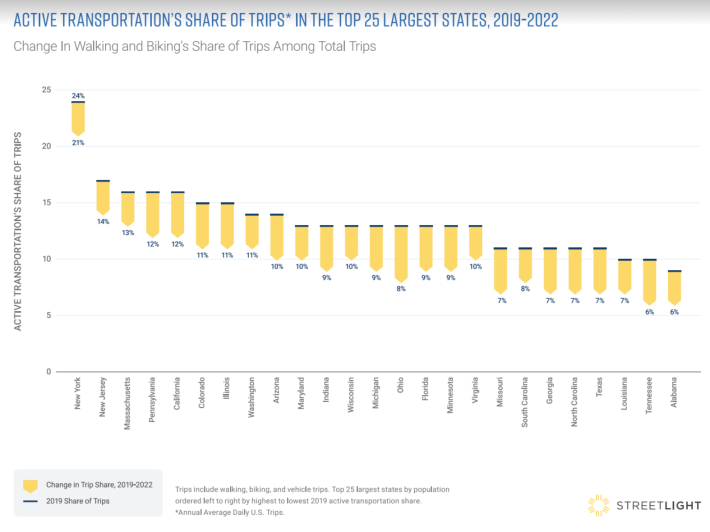
The study does offer a few caveats to those depressing numbers — and a glimmer of hope. States with warm weather like Arizona, California, and Nevada posted smaller walking declines than those with colder climates, like Ohio, Michigan, Wisconsin, and Missouri.
And in some communities, the trend may already be turning around. Between 2021 and 2022, California and New York experienced a 13 and six percent increase in walking activity, respectively, while D.C. topped the charts with a 32 percent year-over-year spike. Cities that want to mirror those gains could explore quick-build interventions like Open Streets events and curb extensions, at least while they work towards more permanent types of traffic calming and land use reform that makes walking a natural choice.
“Walking is much more mainstream. It's how far more people get around,” Adler said. “This [report] suggests that active transportation needs investment to really bring it back up and to start potentially supplanting some of those vehicle trips, which are coming back much faster than walking trips.”
